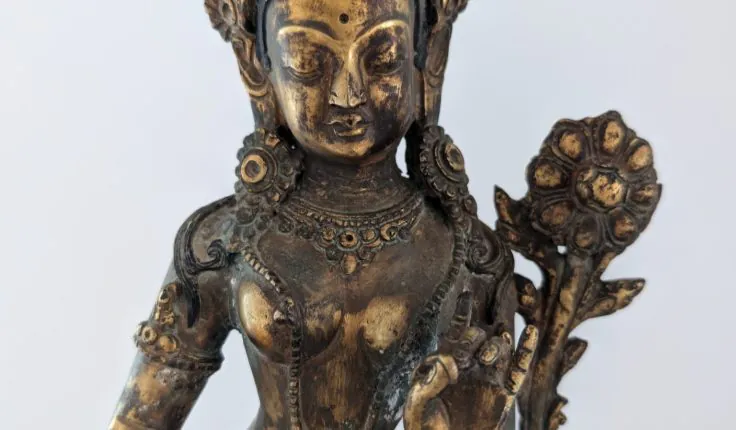The Evolution of Buddhist Art: From Early Buddha Statues to the Iconic Thai Buddha Statue
0 Views

The story of Buddhist sculpture is not just a tale of religious devotion—it is also a fascinating narrative of cultural exchange, artistic evolution, and spiritual symbolism. Among the most captivating aspects of Buddhist art are the Early Buddha Statues, which laid the foundation for the diverse and intricate representations we see today. Over centuries, these early forms evolved across regions, culminating in distinctive styles such as the Thai Buddha Statue, known for its serene elegance and deep spiritual resonance.
The Origins of Early Buddha Statues
Contrary to popular belief, early Buddhist art did not include human depictions of the Buddha. In the centuries following Siddhartha Gautama’s enlightenment, symbolic representations like the lotus, the Bodhi tree, the dharma wheel, or footprints were used to represent his presence and teachings. This aniconic tradition prevailed until the 1st century CE.
The first Early Buddha Statues began to appear around the same time in two key regions: Gandhara (in present-day Pakistan and Afghanistan) and Mathura (in India). These were not mere sculptures; they marked a significant shift in Buddhist iconography, introducing the human form of the Buddha as a focus of worship.
-
Gandhara Style: Strongly influenced by Greco-Roman art due to Alexander the Great’s conquests, Gandharan Buddha statues featured wavy hair, realistic drapery, and a calm, introspective expression. The influence of Hellenistic aesthetics gave these statues a unique, almost Western appearance.
-
Mathura Style: In contrast, Mathura Buddha statues reflected more indigenous Indian traditions. They had a more robust physique, a spiritual smile, and featured flowing garments typical of Indian attire. The statues emphasized vitality and spiritual power.
These Early Buddha Statues became templates for future Buddhist art across Asia, from Central Asia to China, Korea, and eventually Southeast Asia, including Thailand.
The Arrival of Buddhism in Thailand
Buddhism arrived in Thailand over 2,000 years ago, likely through trade and missionary efforts from India and Sri Lanka. As the religion took root, so did its art forms. Thai artists initially drew inspiration from Indian and Sri Lankan Buddhist sculpture, but over time, they developed their own unique style that would culminate in the Thai Buddha Statue—an enduring symbol of Thai identity and spirituality.
Characteristics of the Thai Buddha Statue
The Thai Buddha Statue is instantly recognizable for its grace, proportion, and spiritual symbolism. Unlike the heavier and more robust early Indian statues, Thai Buddhas are typically slender and elegant, reflecting the Thai aesthetic preference for refinement and balance. Some defining features include:
-
Elongated Ears: Symbolizing the Buddha’s royal past and renunciation of material wealth.
-
Flame-Like Ushnisha: A spire or flame at the top of the head representing spiritual energy.
-
Serene Facial Expression: A slight smile and lowered eyes signify deep meditation and inner peace.
-
Various Mudras (Hand Gestures): Each mudra has a specific meaning, such as protection (Abhaya Mudra), teaching (Dharmachakra Mudra), or enlightenment (Bhumisparsha Mudra).
These statues often depict the Buddha in different postures—seated, walking, standing, or reclining—each representing a significant moment in his life or teachings.
The Cultural Significance of Thai Buddha Statues
The Thai Buddha Statue is not just a religious icon but also a powerful cultural artifact. In Thailand, these statues are revered in homes, temples, and public spaces. They are involved in ceremonies, offered garlands and incense, and kept with great reverence.
Thai artists over the centuries have adhered to strict iconographic guidelines when creating Buddha images, ensuring that each statue aligns with canonical texts and aesthetic traditions. However, regional variations do exist. For example:
-
Sukhothai Style: Often considered the pinnacle of Thai Buddhist sculpture, these statues are known for their fluid lines, gentle curves, and the iconic walking Buddha posture.
-
Ayutthaya Style: These statues are more monumental and rigid, reflecting the grandeur of the Ayutthaya kingdom.
-
Rattanakosin Style: The modern style, often seen in Bangkok, combines traditional features with more elaborate ornamentation.
Bridging the Past and Present
From the serene faces of the Early Buddha Statues in Gandhara to the graceful elegance of the Thai Buddha Statue, the visual evolution of the Buddha’s image tells a story of continuity and change. Each era and region adapted the Buddha’s image to reflect local aesthetics, values, and beliefs—while preserving the core ideals of compassion, wisdom, and enlightenment.
Today, both ancient and contemporary Buddha statues continue to inspire not only the devout but also artists, historians, and seekers of beauty and truth. Whether in a museum, a temple, or a quiet corner of someone’s home, the Buddha’s image serves as a timeless reminder of the path to inner peace.
- TAGS :
Related Posts

Can Braided Wigs from Express Wig Braids Look as Natural as Traditional Braids?
Andrin Andrin / September 27, 2025



















